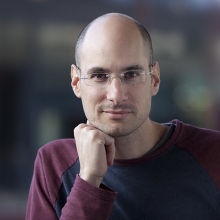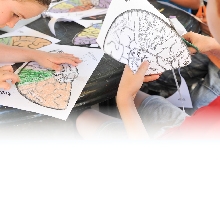The vaccines are here, and research abounds
An update on Weizmann coronavirus research
Features
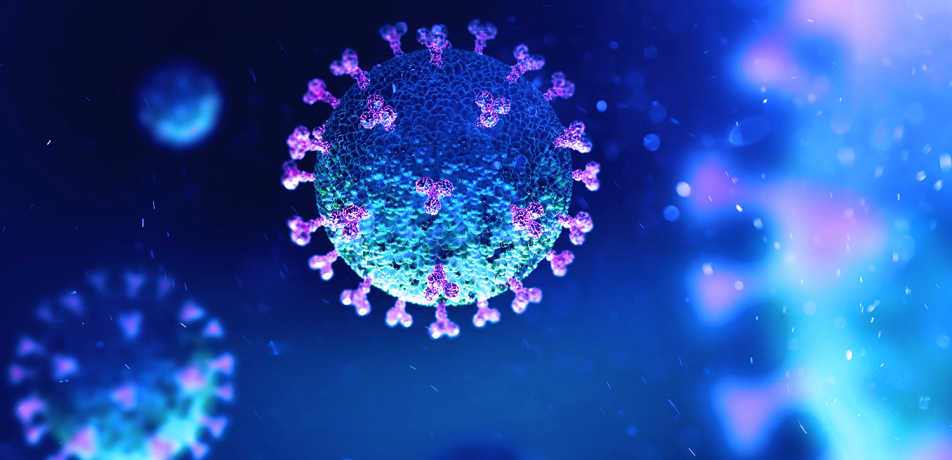
“We say with caution, the magic has started,” Prof. Eran Segal said via Twitter in early February. Prof. Segal was referring to the remarkable rate of vaccination throughout Israel, as well as the parallel drop in cases of COVID-19, hospitalizations, and critically ill patients. Prof. Segal analyses—which he has posted on Twitter, and which were cited in a recent article in the New York Times—underscore a sense of cautious optimism across the country. But we still have a while to go, and the hunt for scientific answers continues.
In an effort to share scientific insights on the disease between Israeli institutions, the Weizmann Institute recently hosted a daylong webinar for scientists on ongoing COVID-19 and SARS-CoV-2 research entitled, “COVID-19: The epidemic that rattles the world.” The event, organized by Prof. Gideon Schreiber and Dr. Ron Diskin, was made possible with the support of the Weizmann Coronavirus Response Fund and Israel Society for Biochemistry and Molecular Biology, and also featured speakers from the Hebrew University of Jerusalem, Tel-Aviv University, the Israel Institute for Biological Research (IIBR), and Kaplan Medical Center. Speakers addressed the molecular biology of the virus, treatments for COVID-19, and the yin and yang of the pandemic.
At the start of the pandemic, scientists at Weizmann launched more than 60 projects exploring the virus from a range of perspectives. Supported by a worldwide community of friends through funds raised for the Weizmann Coronavirus Response Fund, researchers are making meaningful contributions to elucidate the biology, chemistry, and physics of SARS-CoV-2, the coronavirus that causes COVID-19.
Prof. Avi Levy, who is coordinating the Weizmann Institute’s coronavirus research efforts, notes, “The vaccines are here, and they will drastically reduce infection rates. But the coronavirus can mutate, and there are many similar infectious diseases out there to be dealt with. All of this research is critical to understanding all sorts of viruses and to preempting any future pandemics.”
Here’s an update on a sampling of important projects.
Mapping a hijacker’s methods
Dr. Noam Stern-Ginossar studies how viruses invade healthy cells and take over the cells’ systems to survive and reproduce. Viruses hijack the cell’s genetic translation system—and in particular, the ribosomes—in order to produce their own enzymes and proteins. In her regular research agenda, she uses a novel approach known as ‘ribosome profiling’ to create a map of where translational events occur in the viral genome—thereby mapping the full repertoire of proteins that the virus compels its host to produce.
She and her group teamed up with Weizmann’s de Botton Institute for Protein Profiling as well as researchers at IIBR to understand the coronavirus’s ‘hijacker’s handbook’ and develop therapeutic tools.
Using a suite of ribosome-profiling techniques to address this problem, the researchers generated a high-resolution map of coding regions in the SARS-CoV-2 genome. This map enabled the researchers to quantify the expression of key zones along the viral genome that regulate viral protein translation. The researchers further clarified the hijacking process: it isn’t that the virus forces the host cell to translate its instructions (viral mRNA) more efficiently than the host’s own instructions. Rather, it produces more instructions. Viral translation dominates host translation because of the high levels of viral mRNA—like drowning an office in bureaucratic paperwork, so that there’s no time for actual business.
This study, published in Nature in January, provides a highly valuable resource for research into the development of effective drugs and vaccines.
Like chutzpah, some things don’t translate
Not all parts of viral mRNA can be translated into protein—but that doesn’t mean they don’t play a role in protein production. Like a back-up singer or a film extra, these unsung regions affect the molecular environment in which the genetic stars—the translated regions—produce their proteins. Prof. Igor Ulitsky and his group are working to characterize exactly how, in the coronavirus, the genetic sequences that do not get translated into proteins affect stability and efficiency of the sequences that do.
The Ulitsky group initially designed and synthetized a library of approximately 6,000 regions of untranslated genetic sequences (the sequences can vary from virus to virus), and then studied their functions. The scientists are focused in particular on how certain such regions affect the production of a protein (Nsp1) that enhances the virus’s virulence, in collaboration with Dr. Noam Stern-Ginossar’s lab. After addressing certain technical challenges that accompanied infecting cells with the initial library of variants, the researchers are now generating an alternative and more true-to-life protocol. In the coming months, they expect to obtain a detailed map of how specific sequences of these regions affect the stability of the production of Nsp1, and of the viral genome in general.
The landscape of elimination
The body’s surveillance system for identifying and fighting infections is composed of two main factors. The first are the human leukocyte antigen (HLA) molecules—proteins on the surface of cells that bring peptides from inside the infected cell to the cell surface—much like people putting their recyclable plastic bottles in a bin outside their door. Out in the open, the peptide fragments are easily destroyed by the immune system’s T cells—like the recycling collectors emptying just those bins.
The thing is, how does the immune system know which peptides to look for and destroy—which are the recycling bins and which are the garbage bins? In order to know which of them are derived from the virus—via vaccine, for example, Samuels’ group is using a method in which she isolates and analyzes the complete set of peptides bound to the HLA molecules inside the infected cells—the “HLA peptidome”.
In an analysis of SARS-CoV-2-infected cells, the Samuels lab found 26 HLA class-I peptides and 36 HLA class-II peptides, which are estimated to be found in 99 percent of people worldwide. Among the identified peptides, two HLA-I peptides commonly appeared on cell surfaces, while two others were derived from rare coronavirus proteins—that is, these particular coronavirus peptides were marked for ‘the recycle bin’ in very common and detectable ways. Seven peptides were previously shown to elicit an immune response, and two others were novel discoveries. These results may aid the development of the next generation of coronavirus vaccines.
Gearing up ‘chain terminators’ to battle the coronavirus
Prof. Rotem Sorek likes to borrow solutions from the world of bacteria, many of which have a long history of combatting viruses and play beneficial roles in the human body. He and his lab group discovered a family of enzymes within bacteria that produce previously unknown antiviral molecules. These new small molecules, produced by bacteria to fight viruses that infect them, act as ‘chain terminators’ for the viral replication machinery—causing a chemical reaction that halts the virus’s ability to replicate its genetic sequence (or ‘chain’). The Sorek group showed that these small molecules are modified nucleotide derivatives (genetic component parts) that molecularly ingratiate their way into the virus and gum up the works. The study appeared in Nature in January.
Given that most of the currently used antiviral drugs in the clinic function via the chain-termination mechanism, Prof. Sorek and colleagues hypothesize that the new small molecules they discovered could serve as efficient antiviral drugs, including against COVID-19. Yeda Research and Development has licensed these novel small molecules to an external company to test whether they have antiviral activities against COVID-19. These discoveries unveil a potential repository of natural antiviral compounds produced by bacterial immune systems.
Resolving borderline diagnoses
When it comes to diagnosing COVID-19 in large populations, real-time polymerase chain reaction (RT-PCR) is the workhorse of choice. PCR is a method for making millions of copies of a DNA sample so that it can be studied in detail; doing this in ‘real-time’ means analyzing the results while the copies are being made. However, RT-PCR is associated with relatively high rates of borderline, false negative, and false positive results, and is limited in its ability to detect the increasing number of mutated viruses rapidly spreading worldwide. The labs of Prof. Eran Elinav and Prof. Ido Amit are continuing their collaborative efforts to develop and test a massively parallel, next-generation sequencing technique that can characterize borderline cases, SARS-CoV-2 mutations, co-occurring viral, bacterial, and fungal infections, and human host response patterns—all of these with far greater precision than RT-PCR.
In a series of large-scale experiments conducted in the past year, involving over 1,500 participants, the scientists and their teams have increasingly tweaked the system so that it keeps getting more sensitive and therefore more reliable. They also identified viral variants and unique host signatures that may differentiate between infected and non-infected individuals, and between patients likely to develop severe complications and those whose disease is clinically mild.
Profs. Elinav and Amit are currently conducting a validation trial of the pipeline’s testing accuracy in borderline cases in the Hadassah-Hebrew University Medical Center—cases in which RT-PCR led to incorrect or ambiguous results. They are also calibrating their severity-prediction matrix to enable patient stratification at diagnosis. Collectively, the researchers hope to establish a reliable system that complements RT-PCR techniques by accurately resolving borderline cases, identifying known and newly mutated viruses, and using host data to stratify patients most in need of close observation and aggressive treatments from those who can be managed more conservatively.
Moon shot consortium refining drug options
It has been almost a year since the COVID ‘Moon shot’ consortium, led by Weizmann’s Dr. Nir London of the Department of Chemical and Structural Biology at Weizmann, Oxford University’s Prof. Frank von Delft, the UK’s Diamond Light Source synchrotron facility, and others, launched an ambitious initiative to develop a novel anti-viral drug against COVID-19.
Over the course of the year, the scientists have managed to gather support, expertise, guidance, and resources from colleagues around the world, and to advance a series of novel molecules from conception to evidence of anti-viral activity. They have done so by building an alternative drug-discovery template, working with full transparency, and avoiding the encumbrances of intellectual property and red tape.
The scientists’ current lead molecules potently inhibit an essential SARS-CoV-2 protein: a protease, without which the virus cannot replicate. Moreover, through collaboration with the Israel Institute of Biological Research and several labs across the world, the team showed the molecules are not only effective in a test tube, but also in assays against the live virus.
These promising results prompted the next stage in the project, an evaluation of the safety and potency of these potential drugs in live animals. Following extensive preliminary experiments, the first efficacy experiment in mice is scheduled to begin in March.
In the meanwhile, additional drug optimization work continues, with the aim of nominating a preclinical candidate drug in the next few months. Such a candidate would be put through a battery of tests and experiments to make sure it meets the regulatory criteria to advance to clinical studies.
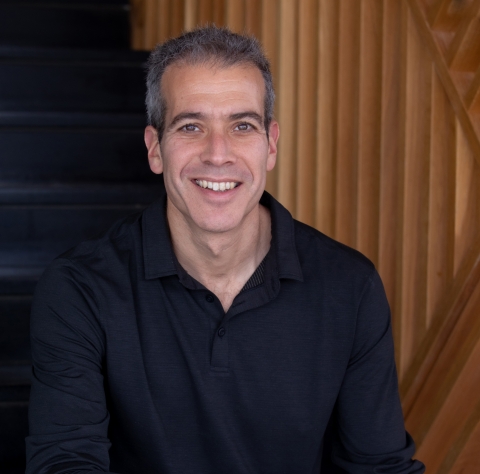
Prof. Eran Segal
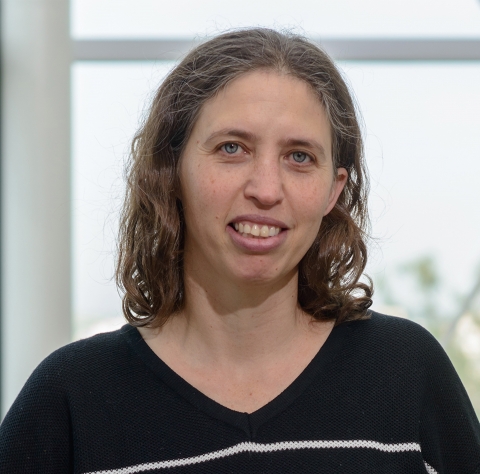
Dr. Noam Stern-Ginossar

Prof. Igor Ulinsky
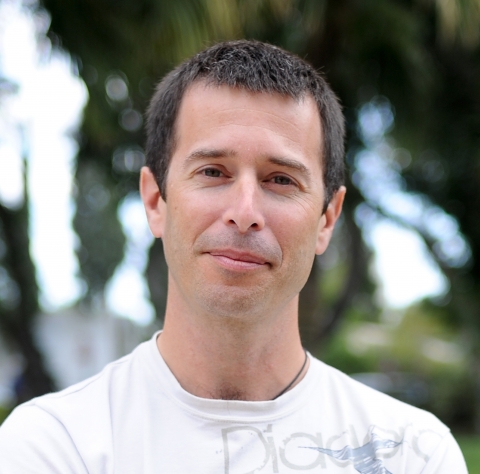
Prof. Rotem Sorek
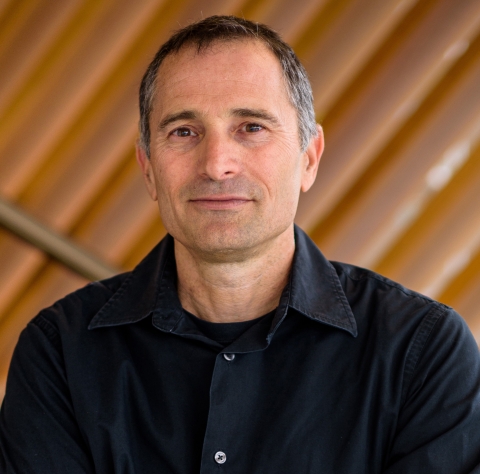
Prof. Ido Amit

Prof. Eran Elinav
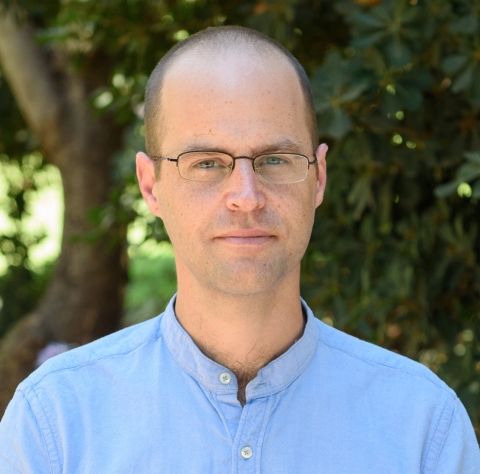
Dr. Nir London





